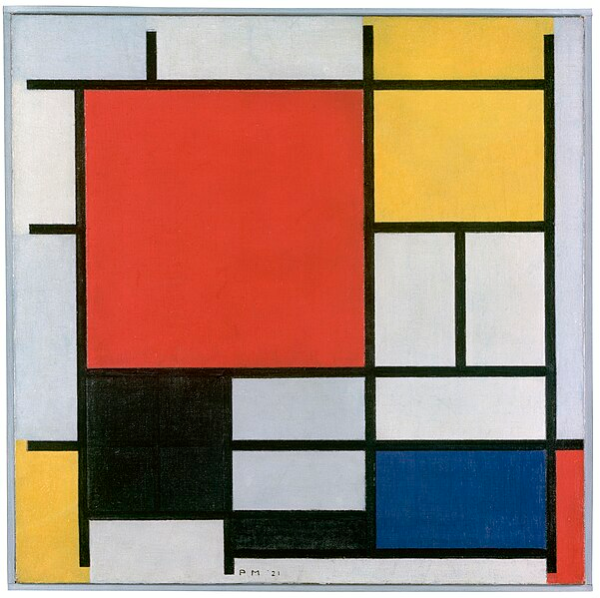Designing with the Fibonacci Sequence

Spiral staircase (Tomekbudujedomek, Getty Images)

Spiral staircase (Tomekbudujedomek, Getty Images)
How does this align with my curriculum?
| Grade | Course | Topic |
|---|
Create a design that uses the Fibonacci sequence.
Consider using the Design & Build Process with this challenge.
This activity will help build skills related to the Research, Plan, and Reflect & Share phases of this process.
Materials:
- Paper and drawing tools
- Ruler
- Computer with internet access (optional)
- Device for taking photos (optional)
- Modelling materials, e.g., building blocks, clay, recycled materials
What to do!
Your challenge is to find ways to use the Fibonacci sequence (including the golden ratio, golden rectangle, Fibonacci spiral, or golden spiral) as many times as possible in the design for an art piece, sports field, or building, etc.
Tips and Hints
- Looking at examples of what you want to design is a great place to start. For example, you may want to look at pieces of art or buildings. It can also be very inspiring to look at things that are totally unrelated. Many great designers and innovations are inspired by nature.
- Research – Look for ways the Fibonacci sequence is incorporated, or could be incorporated in various artworks, structures, etc.
Here are some places you can start your research:
For art: National Gallery of Canada, Art Gallery of Ontario, Smithsonian Institute.
For architecture: Canadian Architectural Archives (University of Calgary), Canadian Architect projects, the buildings around you, or ones you’ve visited or seen in pictures.
You can even investigate your own home! - Plan – When you’re ready to design, use a format you’re familiar with. You can draw, design on the computer, or build a model.
- Reflect & Share – Show your design to someone else and see how many times they can spot the Fibonacci sequence in your design. Are there any you didn’t realize that you used? Are there any places where you could add more?
Discovery
Artists and architects have been inspired by the Fibonacci sequence for a long time. Some of them have used ideas such as the Golden ratio to arrange the parts of an image or a building.
The Dutch artist Piet Mondrian is well known for his abstract geometric artworks. The Golden Ratio appears in some of his paintings.
The architect Le Corbusier was very interested in math and the proportions of rooms and buildings. His work still influences architects and city planners today.

Image - Text Version
Shown is a colour photograph of a painting with different coloured squares and rectangles divided by black lines. The largest square is red, in the top left area of the painting. The black lines that border this square extend below and to the right, creating grids. Most of the spaces between the lines are filled with white or very pale grey. A few are filled with bold colours. Two rectangles below the red are black. A longer rectangle near the lower right corner is blue. In the upper right corner, there is one large and one small yellow rectangle. In the lower right, the edge of a red section is visible. In the lower left, a corner of a yellow section is visible.
Math is all around us, and not just in traditional STEM contexts! Learning about principles like the Fibonacci sequence can help us understand our world in new ways and stretch our creativity.
- What other math principles can you spot in your design? Where could you use the Pythagorean theorem or measure ratios?
- Try measuring everyday things to see if they follow the Golden ratio.
- Count the number of petals on a flower, leaves on a stem, or investigate the branching pattern on a tree or the curve of a spiral shell. Do they fit the Fibonacci sequence?
- People often find rectangles drawn using the Golden ratio to be pleasing to look at. See if this is true by surveying your friends and family. Draw several rectangles, only one of which follows the golden ratio and find out which one they like best. Are the results what you expected?
What’s happening?
Artists and architects have been inspired by the Fibonacci sequence for a long time. Some of them have used ideas such as the Golden ratio to arrange the parts of an image or a building.
The Dutch artist Piet Mondrian is well known for his abstract geometric artworks. The Golden Ratio appears in some of his paintings.
The architect Le Corbusier was very interested in math and the proportions of rooms and buildings. His work still influences architects and city planners today.

Image - Text Version
Shown is a colour photograph of a painting with different coloured squares and rectangles divided by black lines. The largest square is red, in the top left area of the painting. The black lines that border this square extend below and to the right, creating grids. Most of the spaces between the lines are filled with white or very pale grey. A few are filled with bold colours. Two rectangles below the red are black. A longer rectangle near the lower right corner is blue. In the upper right corner, there is one large and one small yellow rectangle. In the lower right, the edge of a red section is visible. In the lower left, a corner of a yellow section is visible.
Why does it matter?
Math is all around us, and not just in traditional STEM contexts! Learning about principles like the Fibonacci sequence can help us understand our world in new ways and stretch our creativity.
Investigate further!
- What other math principles can you spot in your design? Where could you use the Pythagorean theorem or measure ratios?
- Try measuring everyday things to see if they follow the Golden ratio.
- Count the number of petals on a flower, leaves on a stem, or investigate the branching pattern on a tree or the curve of a spiral shell. Do they fit the Fibonacci sequence?
- People often find rectangles drawn using the Golden ratio to be pleasing to look at. See if this is true by surveying your friends and family. Draw several rectangles, only one of which follows the golden ratio and find out which one they like best. Are the results what you expected?